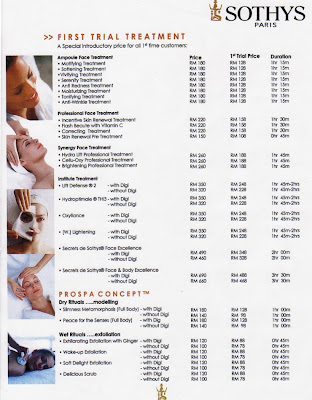Aromatherapy: Types of Materials.
I've heard so much about aroma therapy, due to my frequent "visits" to the salon. Frankly speaking, I am quite interested in it mostly as it seems safe, has that mysterious "aura" about it, and I'd prefer to make my own home skincare & beauty products. This is definitely much cheaper and more efficient as opposed to spending huge chunks of money on commercialised products.
As an anecdote to explain my cost effectiveness in using safe food and normal products, when I was in Penang for work last year, I had a lovely nice bath at the hotel tub almost every night. One stops by some of the malls to check out the cost of bath salts, to find out that one pack of bath salts cost from RM70 to about a hundred bucks.
So I did some research on the Internet to find out that epsom salts and fresh milk worked just as well! A pack of epsom salts set me back by about RM5 at the local pharmacy, and a carton of fresh milk about RM4 from the supermarket..How much did I just save??
A read through the internet finds that there are two schools of thought in regard to aromatherapy. Some are skeptical on its effectiveness, but nonetheless, I find that even Cert IV in Aromatherapy is available at TAFE.
Regardless lets waste no time as I introduce aromatherapy 101 as per found on the world wide web.
Essential oils are obtained by different methods -- distillation being the most familiar. There are four types of essential oils. The type of method is dependent on the source of the oil and its chemical make-up.
1. Absolutes vs. concretes
2. Expressed
3. Solvent-extracted
4. Steam-distilled
In common terminology, the most common ones as per used in salons, or at home the Essential Oil, and Carrier Oils are used.
Essential Oils
They are normally added to Carrier Oils due to their concentrated nature, as it can provoke an allergic reaction, or irritation. They are precious, almost alive, and should be kept in amber glass bottles.
Carrier oil
They are also known as base oil, or vegetable oil, functioning to carry the essential oil onto the skin. They do not contain any concentrated smell nor aroma, and are derived from vegetable resources. High quality oils sold for culinary are often also suitable for massage use, and cheap!
Both essential and carrier oils should be kept cool, and away from strong light, to stop them from decomposing or oxidizing. Refrigerating oils helps preserve their freshness.
It would be easier to decant just enough carrier oil for normal use, whilst mixing it with a small amount of essential oil.
Related Links
- The Real Essentials: The Crash Course.
- Essential-Oil.Com: 4 types of Essential Oils.
As an anecdote to explain my cost effectiveness in using safe food and normal products, when I was in Penang for work last year, I had a lovely nice bath at the hotel tub almost every night. One stops by some of the malls to check out the cost of bath salts, to find out that one pack of bath salts cost from RM70 to about a hundred bucks.
So I did some research on the Internet to find out that epsom salts and fresh milk worked just as well! A pack of epsom salts set me back by about RM5 at the local pharmacy, and a carton of fresh milk about RM4 from the supermarket..How much did I just save??
A read through the internet finds that there are two schools of thought in regard to aromatherapy. Some are skeptical on its effectiveness, but nonetheless, I find that even Cert IV in Aromatherapy is available at TAFE.
Regardless lets waste no time as I introduce aromatherapy 101 as per found on the world wide web.
Essential oils are obtained by different methods -- distillation being the most familiar. There are four types of essential oils. The type of method is dependent on the source of the oil and its chemical make-up.
1. Absolutes vs. concretes
2. Expressed
3. Solvent-extracted
4. Steam-distilled
In common terminology, the most common ones as per used in salons, or at home the Essential Oil, and Carrier Oils are used.
Essential Oils
They are normally added to Carrier Oils due to their concentrated nature, as it can provoke an allergic reaction, or irritation. They are precious, almost alive, and should be kept in amber glass bottles.
Carrier oil
They are also known as base oil, or vegetable oil, functioning to carry the essential oil onto the skin. They do not contain any concentrated smell nor aroma, and are derived from vegetable resources. High quality oils sold for culinary are often also suitable for massage use, and cheap!
Both essential and carrier oils should be kept cool, and away from strong light, to stop them from decomposing or oxidizing. Refrigerating oils helps preserve their freshness.
It would be easier to decant just enough carrier oil for normal use, whilst mixing it with a small amount of essential oil.
Related Links
- The Real Essentials: The Crash Course.
- Essential-Oil.Com: 4 types of Essential Oils.


Comments